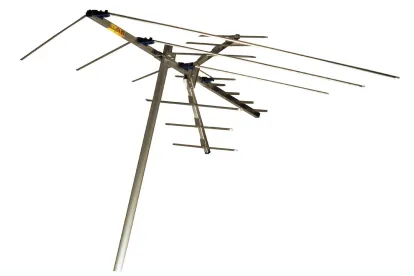As part of the Federal Communications Commission’s (FCC) strategy to help accelerate the deployment of next-generation wireless and wireline broadband infrastructure, the FCC has utilities squarely within its sights. In a Notice of Proposed Rulemaking, Notice of Inquiry, and Request for Comment (FCC 17-37) (NPRM), the FCC proposes sweeping changes to its pole attachment timelines, processes, rates and complaint procedures.
Requests for comments broadly include a complete reexamination of existing make-ready procedures and charges, proposed removal of capital expenses from pole attachment rates, and the imposition of a pole attachment shot-clock for complaint resolutions. Also investigated is the appropriate rate for commingled services, including when a cable operator or a telecommunications carrier offers information services as well as cable or telecommunications services over a single attachment.
Comments are due 30 days after publication in the Federal Register, with replies due 30 days thereafter. Comments are expected to be due in early June. Although requests for extensions of the pleading cycles might be sought, given the comprehensive nature of the NPRM (and there are other issues addressing telecommunications matters), the FCC may not extend the pleading cycles.
Below are several of the central issues for comment that may be of interest to electric utilities. Additional details are set out in the NPRM.
A. Speeding Pole Attachment Timelines
- 1. Application Review
- Whether a utility should review and make a decision on a completed pole attachment application within a timeframe shorter than the current 45 days, e.g., within 30 or 15 days.
- Whether to retain the existing rule allowing utilities 15 extra days to consider pole attachment applications in the case of large orders (i.e., up to the lesser of 3,000 poles or five percent of the utility’s poles in a state) and whether to cap at a total of 45 days, utility review of those pole attachment applications that are larger than the lesser of 3,000 poles or five percent of a utility’s poles in a state.
- 2. Survey, Cost Estimate, and Acceptance
- Whether the review period for pole attachment applications should still include time for the utility to survey the poles for which access has been requested.
- With regard to the estimate and acceptance steps of the current pole access timeline, whether to require a timeframe for these steps that is shorter than the current 28 days e.g., 14-day or 10-day period or to eliminate it altogether. Alternatively should the two steps be incorporated into the make-ready timeframe?
- 3. Make Ready
- Whether the current 60-day maximum period for existing attachers to complete make-ready work should be reduced to 30 days or less for small pole attachment requests and 45 days for medium-size requests.
- Whether the current 45-day and 90-day maximum period extensions for wireline and wireless attachments above the communications space (total periods of up to 90/135 days) should be retained.
- Are there situations in which it is reasonable for existing attachers to go beyond the current FCC timeframes to complete make-ready work?
- What action should the FCC take to encourage utilities to proactively make room for future attachers by consolidating existing attachments, reserving space on new poles for new attachers, and allowing the use of extension arms to increase pole capacity?
B. Alternative Pole Attachment Processes
- 1. Use of Utility-Approved Contractors to Perform Make-Ready Work
- Whether to allow new attachers to use utility-approved contractors to perform “routine” make-ready work and also to perform “complex” make-ready work (i.e., make-ready work that reasonably would be expected to cause a customer outage) in situations where an existing attacher fails to do so.
- Whether to expand the use of utility-approved contractors to perform make-ready work, especially earlier in the pole attachment process.
- Whether to eliminate the utility’s right to complete make-ready work in favor of a new attacher performing the make-ready work after an existing attacher fails to meet its make-ready deadline.
- What are the benefits and costs of allowing new attachers to use utility-approved contracts to perform make-ready work vs allowing contracts no approved by existing attachers to move existing equipment of a pole?
- What safeguards should be adopted to protect existing attachers, utilities, and their customers in the event that the new attacher’s contractors err in the performance of make-ready work?
- Would it be reasonable to eliminate the utility’s right to complete make-ready work in favor of a new attacher performing the make-ready work after an existing attacher fails to meet its make-ready deadline? Should utilities be required to keep a separate list of contractors authorized to perform make-ready work for wireless attachments above the communications space on a pole? Should utility-approved contractors that work for new attachers be allowed to perform make-ready work on wireless attachments above the communications space on a pole?
- As to safety and property concerns, the FCC seeks comment on whether attachers (new, existing, and utilities) should be required to agree on a contractor that the new attacher could use to perform make-ready work or whether existing attachers (or their contractors) be given the opportunity to observe the make-ready work being done on their existing equipment by the new attachers’ contractors.
- 2. New Attachers Performing Make-Ready Work
- Whether new attachers (using utility-approved contractors) should be allowed to perform routine make-ready work in lieu of the existing attacher performing such work. What are the risks and drawbacks of letting new attachers conduct routine make-ready work without allowing existing attachers the opportunity to do so?
- Should new attachers that perform make-ready work be required to indemnify, defend, and hold harmless existing attachers for damages or outages that occur as a result of make-ready work on their equipment?
- 3. Post Make-Ready Timeline
- If existing attachers are not part of the make-ready process, then what is an appropriate timeline for inspections and/or surveys by the existing attachers after the completion of make-ready work? Is it reasonable to allow the existing attacher to elect to fix the defective make-ready work on its own (at the new attacher’s expense) or to require the new attacher to fix the problems caused by its work?
- 4. One-Touch Make-Ready (OTMR)
- The FCC identifies several different types of existing OTMR pole attachment regimes (both government-adopted and utility-adopted) and seeks comment on the benefits and drawbacks on requiring use of the elements of these OTMR pole attachment process.
- 5. Other Pole Attachment Process Proposals
- Whether a “right-touch, make-ready” requirement in which a utility gets 30 days to review a pole attachment application, then provide existing attachers 45 days to complete make-ready work or be charged a fine of $500 per pole per month until work is completed, is reasonable. Should there be a standard “bonus” or multiplier applied to the make-ready reimbursements sought by existing attachers from new attachers if the overall timelines are met?
- Are there ways the FCC could incentivize utilities to establish online databases, maps, or other public information sources regarding pole rates, locations, and availability? Should similar information also be made publicly available for ducts, conduits, and rights-of-way? Should pole owners be required to make pole attachment rates publicly available online?
- If utilities, existing attachers, and new attachers cannot agree on make-ready plans within 15 days, could the following arrangement be used: First, the new attacher would select a “default” contractor (approved by the utility); and second, the existing attachers would be able to accept the default contractor or do the make- ready work themselves (and be reimbursed by the new attacher) within a specified timeframe, with penalties for failure to meet the make-ready deadline?
- What actions might the FCC undertake to speed deployment of next generation networks by facilitating access to infrastructure owned by entities not subject to Section 224? What steps should be taken to facilitate access to information regarding pole attachment rates and costs from pole owners subject to Section 224?
- 6. Access to Conduit
- Are there ways to make the process of gaining access specifically to utility conduit more transparent? Do utilities or municipalities have readily available information on the location and cost of access to conduit? Are there “best practices” that utilities or municipalities have established that make it easier for providers to obtain crucial information on conduit access?
C. Re-examining Rates for Make-Ready Work and Pole Attachments
- 1. Requiring Utilities to Make Available Schedules of Common Make-Ready Charges
- Whether to require utilities to provide potential new attachers with a schedule of common make-ready charges to create greater transparency for make-ready costs. What are the benefits and any potential burdens associated with requiring utilities to provide schedules of make-ready charges? How are schedules of common make-ready charges made available, used, and implemented by both utilities and potential new attachers today? Which make-ready jobs and charges are the most common and are there are other mechanisms currently in use, such as standardized contract terms, that provide the necessary information and transparency to the make-ready process?
- 2. Reducing Make-Ready Charges
- Utilities are not entitled to collect money from attachers for unnecessary, duplicative, or defective make-ready work. Would codifying the holding that new attachers are responsible only for the cost of make-ready work made necessary because of their attachments help to ensure that make-ready costs are just and reasonable?
- Would it be reasonable to allow utilities to set a standard charge per pole that a new attacher may choose in lieu of a cost-allocated charge? Should the choice belong to the utility or the new attacher? Would a per-pole charge of, for example, $300, $400, or $500 permit utilities to recover their reasonable make-ready costs and provide new attachers with an affordable alternative to negotiating with the utility over the applicable costs to be included in make-ready charges?
- Would it be reasonable to require utilities to reimburse new attachers for make-ready costs for improvements that subsequently benefit the utility? Conversely, whether requiring utilities to pass a percentage of additional attachment benefits back to parties with existing attachments would result in a disincentive to add new competitors to modified poles.
- Whether the FCC’s complaint process provides a sufficient mechanism by which to ensure that make-ready costs are just and reasonable.
- 3. Excluding Capital Expenses from Pole Attachment Rates
- The FCC proposes to codify a rule that excludes capital costs that utilities already recover via make-ready fees from pole attachment rates. According to the FCC, not all attachers benefit from lower rates in these circumstances, in part because its rules do not explicitly require utilities to exclude already-reimbursed capital costs from their pole attachment rates. Is amending Section 1.1409(c) to exclude capital expenses already recovered via make-ready fees from “actual capital costs” sufficient to ensure no double recovery occurs by utilities?
- How do utilities recalculate rates when make-ready pays for a new pole, what rate reductions pole attachers have experienced when poles are replaced through the make-ready process, and whether attachers have experienced the inclusion of already-reimbursed capital costs in their pole attachment rates?
- How do utilities treat capital expenses associated with their own make-ready work? When utilities replace poles to accommodate their own needs or to create additional electrical space, do they appropriately treat associated capital expenses as make-ready work that is wholly excluded from pole attachment rates? How do existing attachers know when new attachers or the utility have fully paid the capital expenses as make-ready costs so that those expenses should be wholly excluded from rates going forward?
- 4. Capital Costs Not Otherwise Recovered Via Make-Ready Fees
- Should the capital costs that are not otherwise recoverable through make-ready fees be excluded from the upper-bound cable and telecommunications pole attachment rates? What is the extent to which the capital costs of a pole, other than those paid through make-ready fees, are caused by attachers other than the utility (especially when there is space already available on the pole)?
- To what extent would the exclusion of such capital costs further reduce pole attachment rates? To what extent would the exclusion of these particular capital costs from the rate formulas burden the ratepayers of electric utilities? What policy justifies charging pole attachers, whose costs of deployment may determine the scope of their investment in infrastructure, anything more than the incremental costs of attachment to utilities?
- Should the FCC interpret the term “cost” in the telecommunications pole attachment formula to exclude all capital costs?
- What is the appropriate rate for commingled services, including when a cable operator or a telecommunications carrier offers information services as well as cable or telecommunications services over a single attachment? Should the rate for commingled services be based on the upper bound of the cable rate formula, the telecommunications rate formula, or some third option? Should capital costs be excluded from the rate formula used by the FCC to determine the commingled services rate? Should the FCC set the commingled services rate equal to the lower bound of the cable rate formula?
D. Pole Attachment “Shot Clock” for Pole Attachment Complaints
- 1. Timeframes
- Whether the FCC should establish a “shot clock” for Enforcement Bureau resolution of pole access complaints and if so, whether 180-days or some other shorter timeframe be reasonable for resolving complaints.
- Should the shot clock be started at the time the pole access complaint is filed, as is the case for state complaints, or at some later time in the process, such as when a reply is filed by the complainant?
- Should the shot clock be paused for a reasonable time in situations where actions outside the Enforcement Bureau’s control are responsible for delaying its review of a pole access complaint? What objective standards should be used to pause the shot clock and to resume the shot clock?
- 2. Establishment of Pre-Complaint Procedures
- Whether to require parties to resolve procedural issues and deadlines in a meeting to be held either remotely or in person prior to the filing of the pole access complaint (and prior to the starting of the shot clock).
- Whether the FCC should adopt a 180-day shot clock for pole attachment complaints other than those relating to access. Has the length of time to resolve other pole attachment complaints stymied the deployment of broadband infrastructure?









 />i
/>i
